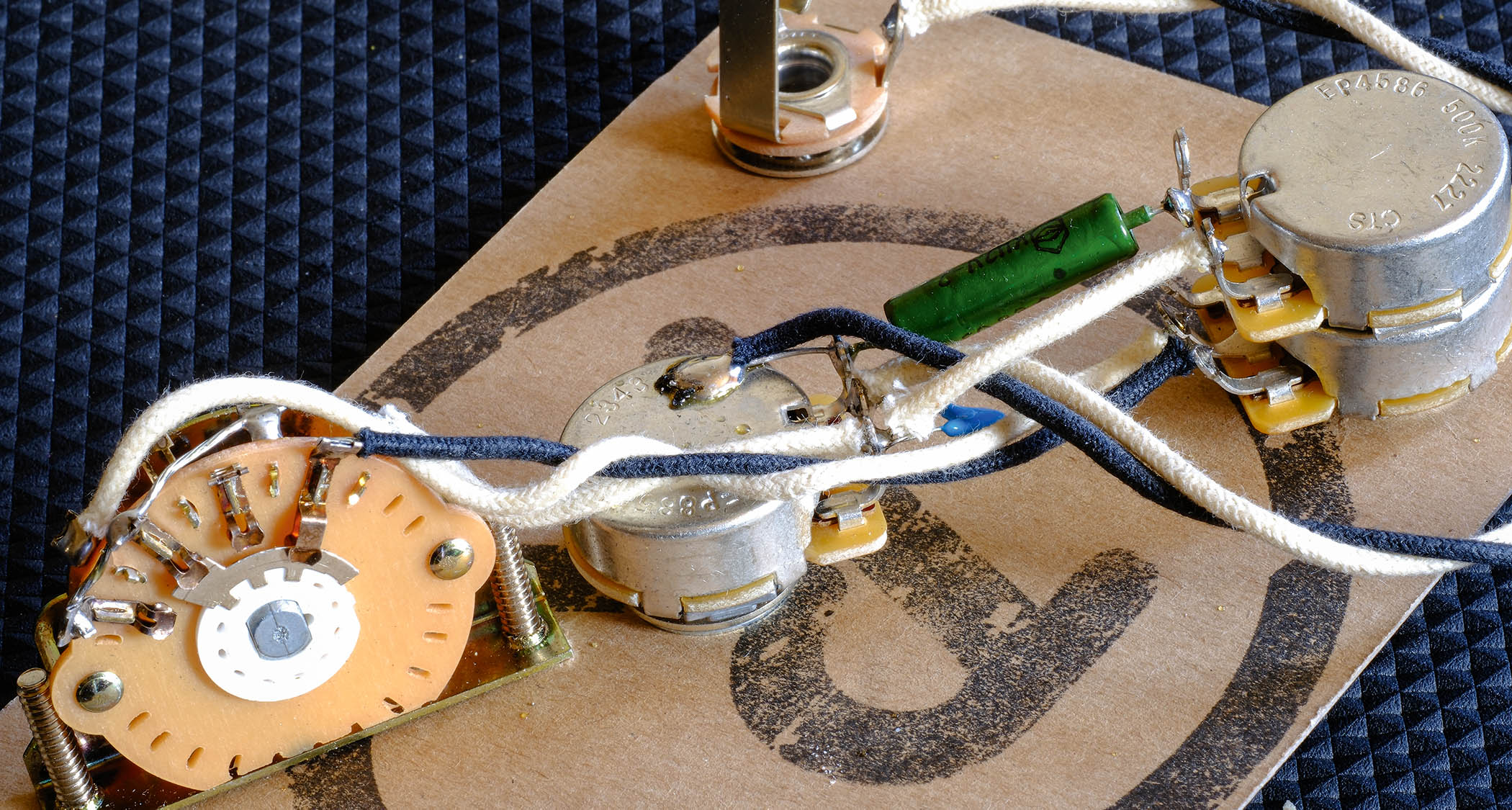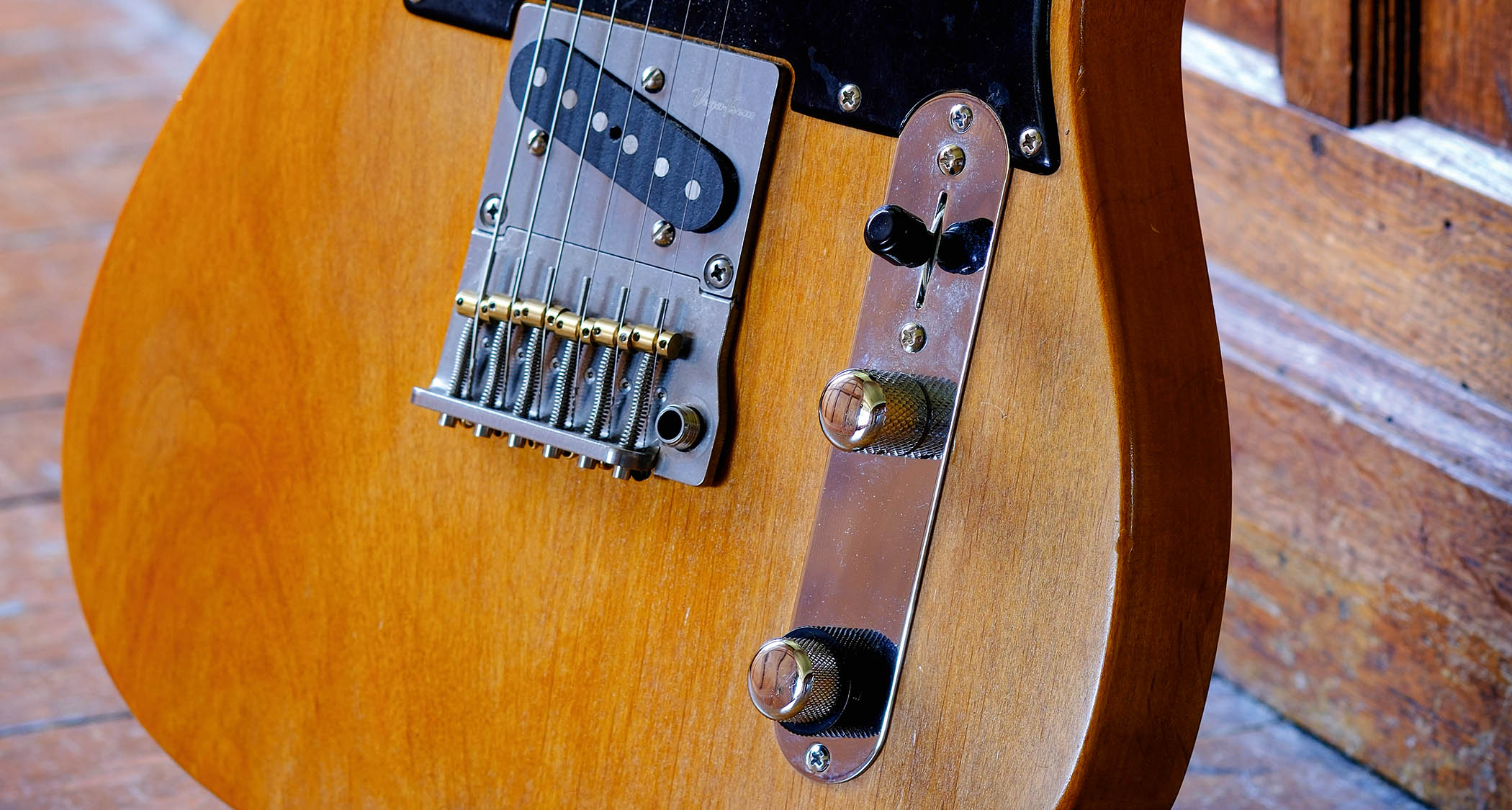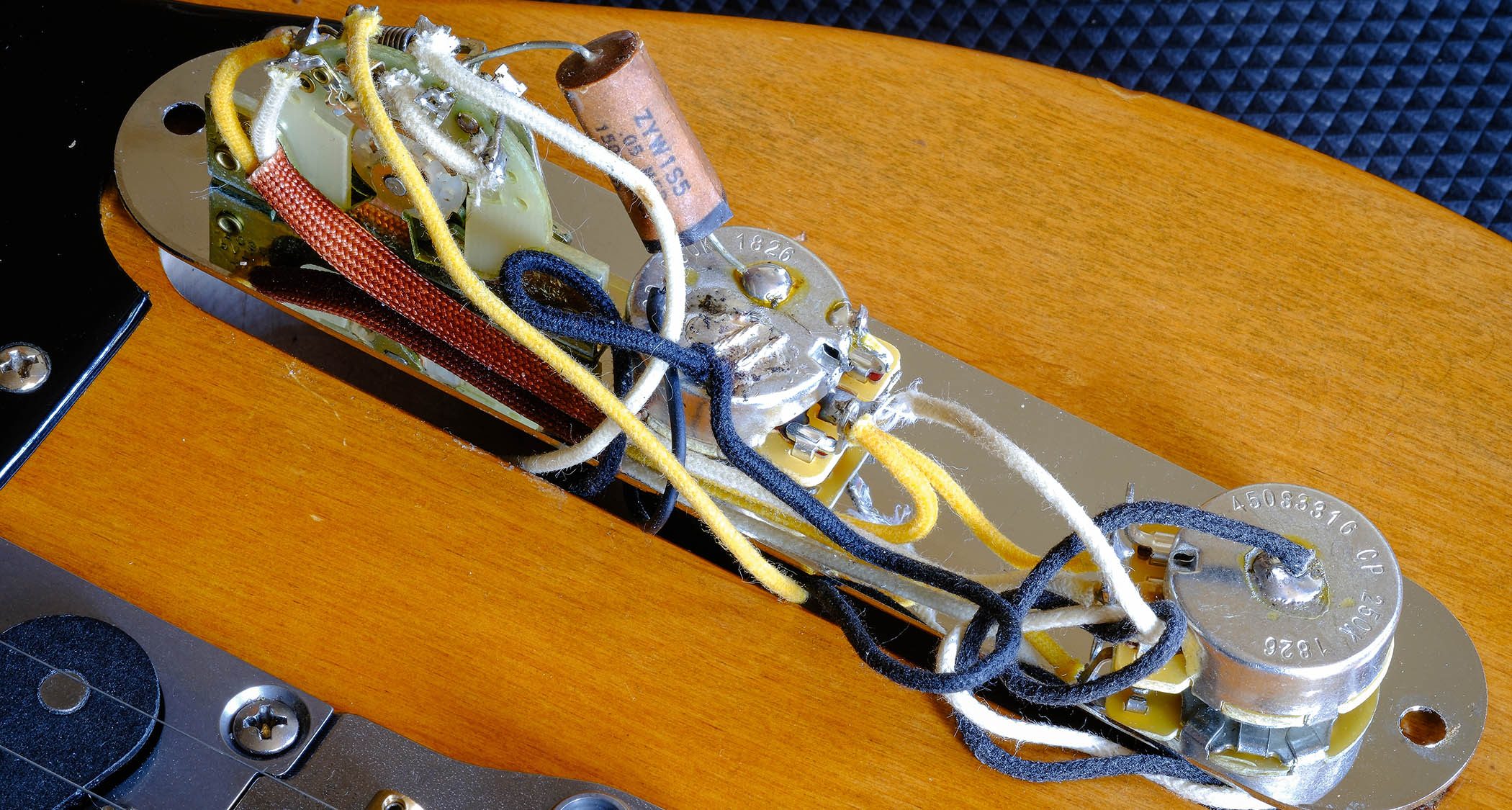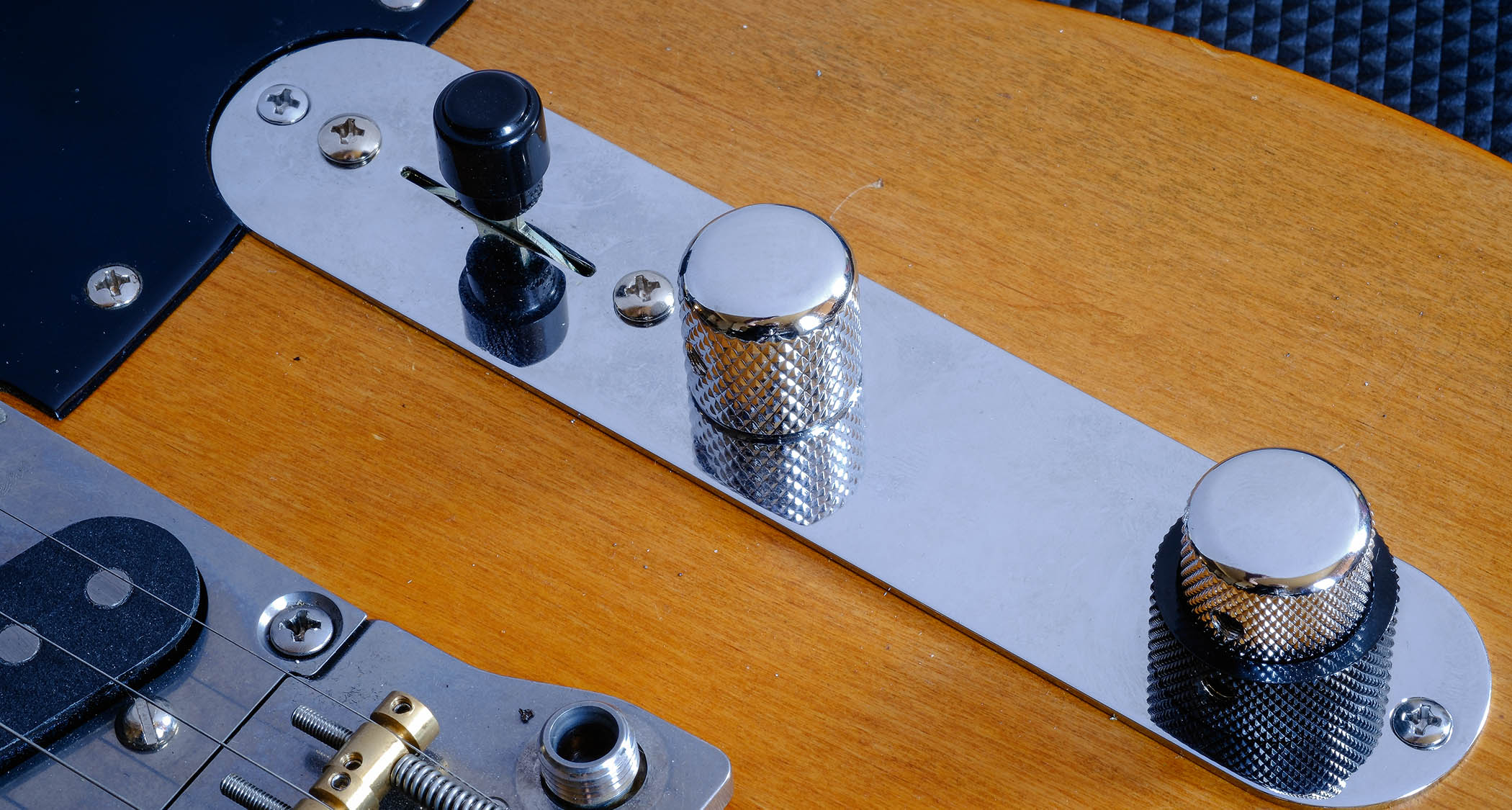Guitar World Verdict
While trillions of players are perfectly happy with the good ol’ Tele’s standard wiring, this Radioshop mod gives you control over the relative level of the two pickups – without adding a second volume control.
Pros
- +
A simple high-quality retrofit circuit.
- +
Allows you to adjust the relative level of bridge and neck pickups while retaining the tone control
- +
If you can solder, it's easy to install.
Cons
- -
Nothing.
You can trust Guitar World
Chances are you’ll own – or certainly have owned – a good ol’ Fender Telecaster or two. To be fair to Mr Fender, Teles weren’t designed to be easy to modify: a simple pickup change means removing that bridge plate, and the compact control cavity is not exactly spacious if you plan to add another control or something like a boost, which might need a battery.
And while plenty of us are perfectly comfortable with the Tele’s standard ‘modern’ circuit, which is made up of master volume and tone controls, and the bridge, both, neck pickup selections from the three-way lever switch, it’s certainly not the only way to wire up and drive your Tele.
For example, I previously ended up installing the original 1950 to ’52-era circuit (Charles Guitars) into my Wilkinson T-style kit-build. This is very different from the ‘modern’ Tele circuit, which only began to be used by Fender from 1967. On the original circuit in position 3 on the lever switch, we get neck pickup but with a pre-set capacitor roll-off for a ‘jazz’ or bass-like sound.
To be honest, I haven’t used that much. Thankfully, the middle position voices the neck pickup without that treble-snagging capacitor, which has seen a lot more use. However, the ‘secret’ lies in position 1, which voices the bridge pickup but with what we know now as the tone control working as a pickup blend.
With that control fully clockwise, the bridge pickup is voiced, but by turning the blend control anti-clockwise the neck pickup is gradually introduced. For a die-hard Keef and roots rock fan like myself, this is where the money lies.

But that wiring means I don’t have the instant and bouncy dual-pickup mix of the modern circuit’s middle position – you’ve got to move the blend control fully anti-clockwise to get that. And, more importantly, I don’t have a tone control. Telecasters can be very bright on the bridge pickup and, well, gigging one without a tone control isn’t for everyone.
That Wilkinson T-style kit has also been host for various other experiments, mods and pickup installs. It currently has Bare Knuckle’s Flat ’50 pickup set and that Vega-Trem VT2 vibrato (which I don’t use as a wang bar, but I really enjoy the sound it brings). In fact, this kit-build is in daily use and has been used for quite a bit of recording, too. I’ve often thought about taking it on a gig, but with no tone control I’m a bit hesitant.
Which is where Bedwas-based Radioshop Pickup’s latest bit of kit comes in. The company’s new ‘Telecaster Wiring Mod’ offers both a standard tone control and a pickup blend via a stacked concentric pot in the tone control position. My prayers have been answered!
Where It Started

“I didn’t particularly want to mess with the simplicity of the Telecaster because that’s its beauty – but I have always kind of wanted a bit more from the controls,” says Radioshop’s Paul Best of the origins of the mod.
“One idea I had was from the 1962 Jazz Bass with its two stacked concentric pots – a volume and tone for each pickup – but I felt visually that might be overkill, plus it might be too much like a Les Paul, which I didn’t really want to replicate. Then I thought, ‘Could we do it with one concentric control and get control over the level of both pickups?’ I tried it on my own guitar and liked it, and thought other players might like it, too.
“But it was also inspired by the feeling some players have that their neck pickup is too dark,” he continues, “so by rolling in a bit of the bridge pickup without taking too much away from the neck pickup, you might have something that’s a bit more usable.
“My assumption was that I’d be on the neck and I’d just bring in a bit of bridge – or vice versa. Now, if you wind the blend control fully back you have the same dual-pickup mix in all three selector switch positions. But if you dial the control up to around the midway point you have three variations of the middle-position mixed-pickup sound. I hadn’t really foreseen that.”
“Plus, a lot of people complain they have volume differences between their two pickups, so this circuit will negate some of that issue. Also, if one of your pickups is reverse wound, reverse polarity [RWRP], then the minute you sneak some of the other pickup in – adding a little bridge to neck, for example – you’re getting some, not all, of the hum-cancelling.”
Presumably it would be a good setup for a Tele with a neck humbucker, too? “Definitely! I’d try that out, but I’m running out of guitars,” laughs Paul.
Installation
The great thing about a Tele is the top-mount control plate so you can access the wiring by just removing two screws – much easier than a Stratocaster. You can obviously unsolder the pickups, unscrew the knobs and use the control plate to mount the new circuit, or grab a new control plate and mount the new circuit to that. If you want to swap back, it’s less work and much quicker.
The team at Radioshop not only makes some fine pickups but clearly has its soldering chops down. The new loom looks old-school but very tidy, and ours uses a single audio taper CTS 250k volume pot (with an optional treble bleed circuit comprising a .001µF capacitor and a 150k resistor wired in parallel) with a 250k tone pot placed on top of the lower 500k blend pot.
“We had to convert the blend pot to be a no-load ourselves because these concentric pots aren’t available with that feature and, of course, it’s central to the mod,” says Paul.
So the no-load blend pot is out of circuit when it’s fully up, clockwise, but when you roll it back it introduces the other pickup. When you’re on the bridge position it introduces the neck, and vice versa, and obviously the blend feature only functions in positions 1 and 3 on the lever switch; position 2’s dual mix pickup stays unchanged.

Along with that optional treble bleed, you have a choice of either a .047µF Orange Drop tone capacitor or, as here, a K42Y-2 paper-in-oil type.
If you can solder, the install is easy enough. Unsolder the pickup leads and separate earths (plus the leads to the output jack that are already mounted to the Electrosocket-style output jack plate on our kit-build). Next, you’ve got to remove the old circuit from the control plate and remount the new one and resolder the pickups, output jack and earth wires back on the new five-way switch and relevant points.
The Radioshop kit also includes a domed and knurled volume knob and the stacked control knobs for that tone/blend. The pots are both solid shaft types, so the knobs screw on and you need to take care that the upper and lower portions of the tone/blend move independently. Start with the lower black knob then the upper tone knob, slightly lifting it a fraction before you tighten the screw.
Firing Up
Working on a Telecaster’s circuit is easy because all we’ve done is removed and replaced it – we haven’t had to slacken or remove any strings or the scratchplate, as you would on a Stratocaster. Everything works first time and, reassuringly, with the lower blend control fully up (clockwise) and effectively out of the circuit, we have the standard Telecaster circuit. All good.
You can hear what’s happening with the blend control just by lightly tapping the pickups with a small screwdriver
You can hear what’s happening with the blend control just by lightly tapping the pickups with a small screwdriver. In the bridge position with the blend full up, if you tap the neck pickup you won’t hear anything through your amp. As you slowly move the blend anti-clockwise an increasing amount of the neck is added to the bridge.
Audibly, then, we slowly move from the no-blend direct pickup sound to a subtly more textured response as the other pickup is introduced. It certainly warms and thickens the solo bridge pickup – but not excessively – and adds a subtle attack to the neck.
Obviously, if you wind the blend fully off (anti-clockwise) you’ll have the same dual-pickup mix in all three positions on the selector, but keep it midway and you hear three subtly different and very usable mixes.
Of course, any two-pickup guitar with individual volume controls will create similar pickup blends or mixes, not least a Les Paul with its dual volumes and the toggle switch centred. And although here on our modded Tele we can only adjust the level of one pickup against the full output of the other, you get an idea of the blend potential.
But a significant difference with the Tele mod is that, because it isn’t part of the blend, the actual volume control remains a master volume that can raise or lower the output of whatever pickup blend you’ve dialled in.
As with any good Tele, there’s no shortage of treble response on the bridge and knocking back the tone easily sorts that. Also, previously pulling the volume control back rounded the highs a little, but as we have that treble bleed on the volume control, it barely does so here – something you might miss or indeed prefer. Either way, removing the treble bleed is a simple job.
Final Thoughts
Getting your guitar to perform how you want it to – rather than the way a manufacturer thinks you want it – is the key to all this mucking around in The Mod Squad.
While trillions of players are perfectly happy with the good ol’ Tele’s standard wiring, this Radioshop mod gives you control over the relative level of the two pickups – without adding a second volume control (it could be very handy to try if you have a Tele with a humbucker in neck position, for example), and nothing changes with the blend control out of circuit.
Plus, while those uneven mixes that the blend allows might be relatively subtle, they do add a slightly different and very usable character. Standard Telecaster plus a bit more? Nothing wrong with that.
Specs
- PRODUCT: Radioshop Telecaster Wiring Mod
- COST: £140 as reviewed with treble bleed and PIO cap. As the Radioshop Telecaster Tone System (£325), which includes a set of Pure ’50s or Pure ’60s T-style pickups, the price of the mod circuit effectively drops to £115
- CONTACT: Radioshop

Dave Burrluck is one of the world’s most experienced guitar journalists, who started writing back in the '80s for International Musician and Recording World, co-founded The Guitar Magazine and has been the Gear Reviews Editor of Guitarist magazine for the past two decades. Along the way, Dave has been the sole author of The PRS Guitar Book and The Player's Guide to Guitar Maintenance as well as contributing to numerous other books on the electric guitar. Dave is an active gigging and recording musician and still finds time to make, repair and mod guitars, not least for Guitarist’s The Mod Squad.
“I suppose I felt that I deserved it for the amount of seriousness that I’d put into it. My head was huge!” “Clapton is God” graffiti made him a guitar legend when he was barely 20 – he says he was far from uncomfortable with the adulation at the time
“I was in a frenzy about it being trapped and burnt up. I knew I'd never be able to replace it”: After being pulled from the wreckage of a car crash, John Sykes ran back to his burning vehicle to save his beloved '76 Les Paul
“It holds its own purely as a playable guitar. It’s really cool for the traveling musician – you can bring it on a flight and it fits beneath the seat”: Why Steve Stevens put his name to a foldable guitar














